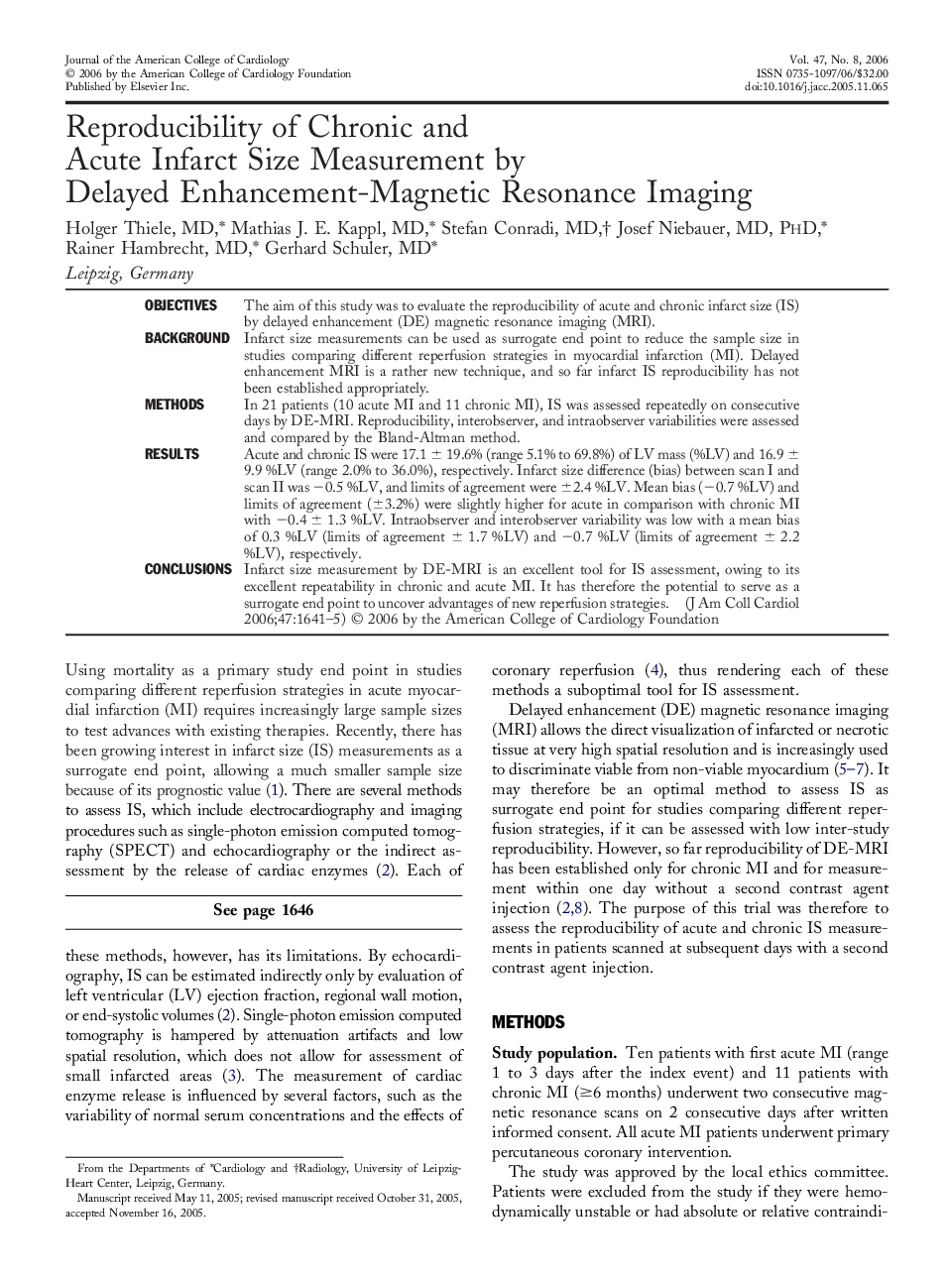| Article ID | Journal | Published Year | Pages | File Type |
|---|---|---|---|---|
| 2952331 | Journal of the American College of Cardiology | 2006 | 5 Pages |
ObjectivesThe aim of this study was to evaluate the reproducibility of acute and chronic infarct size (IS) by delayed enhancement (DE) magnetic resonance imaging (MRI).BackgroundInfarct size measurements can be used as surrogate end point to reduce the sample size in studies comparing different reperfusion strategies in myocardial infarction (MI). Delayed enhancement MRI is a rather new technique, and so far infarct IS reproducibility has not been established appropriately.MethodsIn 21 patients (10 acute MI and 11 chronic MI), IS was assessed repeatedly on consecutive days by DE-MRI. Reproducibility, interobserver, and intraobserver variabilities were assessed and compared by the Bland-Altman method.ResultsAcute and chronic IS were 17.1 ± 19.6% (range 5.1% to 69.8%) of LV mass (%LV) and 16.9 ± 9.9 %LV (range 2.0% to 36.0%), respectively. Infarct size difference (bias) between scan I and scan II was −0.5 %LV, and limits of agreement were ±2.4 %LV. Mean bias (−0.7 %LV) and limits of agreement (±3.2%) were slightly higher for acute in comparison with chronic MI with −0.4 ± 1.3 %LV. Intraobserver and interobserver variability was low with a mean bias of 0.3 %LV (limits of agreement ± 1.7 %LV) and −0.7 %LV (limits of agreement ± 2.2 %LV), respectively.ConclusionsInfarct size measurement by DE-MRI is an excellent tool for IS assessment, owing to its excellent repeatability in chronic and acute MI. It has therefore the potential to serve as a surrogate end point to uncover advantages of new reperfusion strategies.
